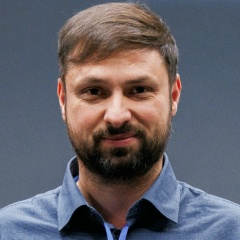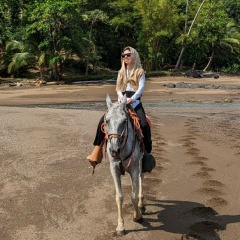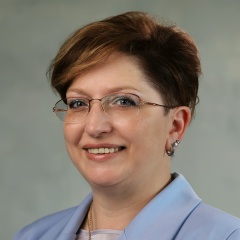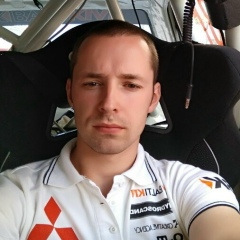Вийя де Лейва (Villa de Leyva) - красивейший колониальный городок и практически колыбель местной цивилизации и независимости. После Ракиры с её ливнем она показалась нам раем). Мы просто сидели на тёплых, согретых солнцем камнях и наслаждались видом на площадь и горы. Вийя де Лейва - очень известное и песещаемое туристами место. Во-первых, многие здания здесь сохранились ещё с 16-18 века, а более современные по указу правительства также стилизованы под старину, что позволяет сохранить ощущение путешествия во времени. Во-вторых, город известен аммонитами, которые представлены не только в местном палеонтологическом музее, но и во многих музеях мира, а также находками почти полных и даже полных скелетов ископаемых рептилий. Для самого крупного из них даже организован отдельный музей. И в-третьих, здесь восхитительная природа, горы, реки, водопады и пещеры с летучими мышами.
А ещё, как нам похвастались местные, тут самая большая в Южной Америке мощеная площадь, аж 14000 кв.м.
Ночью на улицах очень людно - тут множество уличных артистов, музыкантов, рассказчиков, и вообще гуляющего народа. Мы тоже немного поучаствовали в этом празднике жизни, покрутив пои на площади. Уличный театр тут вообще очень распространенная штука.
Когда мы наконец решили, что пора спать, местные показали нам дивное место в пяти минутах от центральной площади, скрытое от глаз и незаметное, где мы и поставили нашу палатку. Единственным минусом оказались мелкие кусачие мошки, укусы которых, как выяснилось, жутко чешутся. Хорошо то, что прокусить ткань они не могут, то есть если одежда закрытая, они не страшны.
А утром было тепло, солнечно и мы поехали смотреть водопады в местечко Перикера (Periquera), которое было поблизости и про которое мы узнали только накануне.
А ещё, как нам похвастались местные, тут самая большая в Южной Америке мощеная площадь, аж 14000 кв.м.
Ночью на улицах очень людно - тут множество уличных артистов, музыкантов, рассказчиков, и вообще гуляющего народа. Мы тоже немного поучаствовали в этом празднике жизни, покрутив пои на площади. Уличный театр тут вообще очень распространенная штука.
Когда мы наконец решили, что пора спать, местные показали нам дивное место в пяти минутах от центральной площади, скрытое от глаз и незаметное, где мы и поставили нашу палатку. Единственным минусом оказались мелкие кусачие мошки, укусы которых, как выяснилось, жутко чешутся. Хорошо то, что прокусить ткань они не могут, то есть если одежда закрытая, они не страшны.
А утром было тепло, солнечно и мы поехали смотреть водопады в местечко Перикера (Periquera), которое было поблизости и про которое мы узнали только накануне.
Villa de Leyva is a beautiful colonial town and practically the cradle of local civilization and independence. After Rakira with her downpour, she seemed to us a paradise). We just sat on the warm, sun-warmed stones and enjoyed the view of the square and the mountains. Wiia de Leiva is a very famous and touristy place. Firstly, many buildings here have been preserved since the 16-18th century, and more modern by order of the government are also stylized as antique, which allows you to maintain the feeling of time travel. Secondly, the city is known for ammonites, which are represented not only in the local paleontological museum, but also in many museums in the world, as well as the finds of almost complete and even full skeletons of fossil reptiles. A separate museum has even been organized for the largest of them. And thirdly, there is amazing nature, mountains, rivers, waterfalls and caves with bats.
And yet, as the locals boasted to us, here is the largest paved area in South America, already 14,000 square meters.
At night, the streets are very crowded - there are many street artists, musicians, storytellers, and generally walking people. We also participated a little in this celebration of life, twisting poi in the square. Street theater here is generally a very common thing.
When we finally decided it was time to sleep, the locals showed us a wonderful place five minutes from the central square, hidden from sight and invisible, where we set up our tent. The only minus turned out to be small biting midges, the bites of which, as it turned out, are terribly itchy. The good thing is that they can’t bite through the fabric, that is, if the clothes are closed, they are not scary.
And in the morning it was warm, sunny and we went to see the waterfalls in the town of Periquera, which was nearby and which we only found out about the day before.
And yet, as the locals boasted to us, here is the largest paved area in South America, already 14,000 square meters.
At night, the streets are very crowded - there are many street artists, musicians, storytellers, and generally walking people. We also participated a little in this celebration of life, twisting poi in the square. Street theater here is generally a very common thing.
When we finally decided it was time to sleep, the locals showed us a wonderful place five minutes from the central square, hidden from sight and invisible, where we set up our tent. The only minus turned out to be small biting midges, the bites of which, as it turned out, are terribly itchy. The good thing is that they can’t bite through the fabric, that is, if the clothes are closed, they are not scary.
And in the morning it was warm, sunny and we went to see the waterfalls in the town of Periquera, which was nearby and which we only found out about the day before.






У записи 10 лайков,
0 репостов,
388 просмотров.
0 репостов,
388 просмотров.
Эту запись оставил(а) на своей стене Танька Агапова


























![Стас Однолетков -=[strast]=- Стас Однолетков -=[strast]=-](https://sun9-50.vkuserphoto.ru/s/v1/ig2/BQKIUfD3kthNCNNY9BS69xiPt_GjwVRhAU8D64L6gfeFjcmrTqYrLAC9NKgCppVxwhm79Mi5RypIHhjSHOhQK2uy.jpg?quality=95&crop=347,544,400,400&as=32x32,48x48,72x72,108x108,160x160,240x240,360x360&ava=1&cs=200x200)




